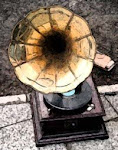 Rich Horne wrote this account of experiences had as a toiler of the sea on a naval ship, the HMAS Sydney, before and at the beginning of WWI. He describes the Pacific during 1913 -1914 from his perspective. His active service was cut short as he lost half a foot in the "Battle of Cocos", the first naval battle of the war, the first ship to ship engagement of the Australian Navy. The only gun on the Sydney which was damaged was the one staffed by Rich.
Rich Horne wrote this account of experiences had as a toiler of the sea on a naval ship, the HMAS Sydney, before and at the beginning of WWI. He describes the Pacific during 1913 -1914 from his perspective. His active service was cut short as he lost half a foot in the "Battle of Cocos", the first naval battle of the war, the first ship to ship engagement of the Australian Navy. The only gun on the Sydney which was damaged was the one staffed by Rich.The conflict took place near Cocos Island off north-west Australia. The other ship was the very effective German ship the Emden which was destroyed by the larger and faster Sydney. A significant part of the crew of the Emden were on Cocos Island when the battle took place, so the ship was not fully-staffed. Many sailors lost their lives or were injured on the Emden and some also on the Sydney. The sailors on the island were never captured but returned to Europe by various means across sea and land. Their journey is documented in a film The Men of the Emden.
Rich's portrait hangs in the Australian War Memorial in Canberra.
Milly Horne, Rich's wife, commented when transcribing the account from the book into a letter that she got quite excited. That letter and the book are reproduced here, "a good yarn".
Image of HMAS Sydney from Gutenberg,
Image of Victor Hugo's Octopus from Toilers of the Sea via Wikipedia







